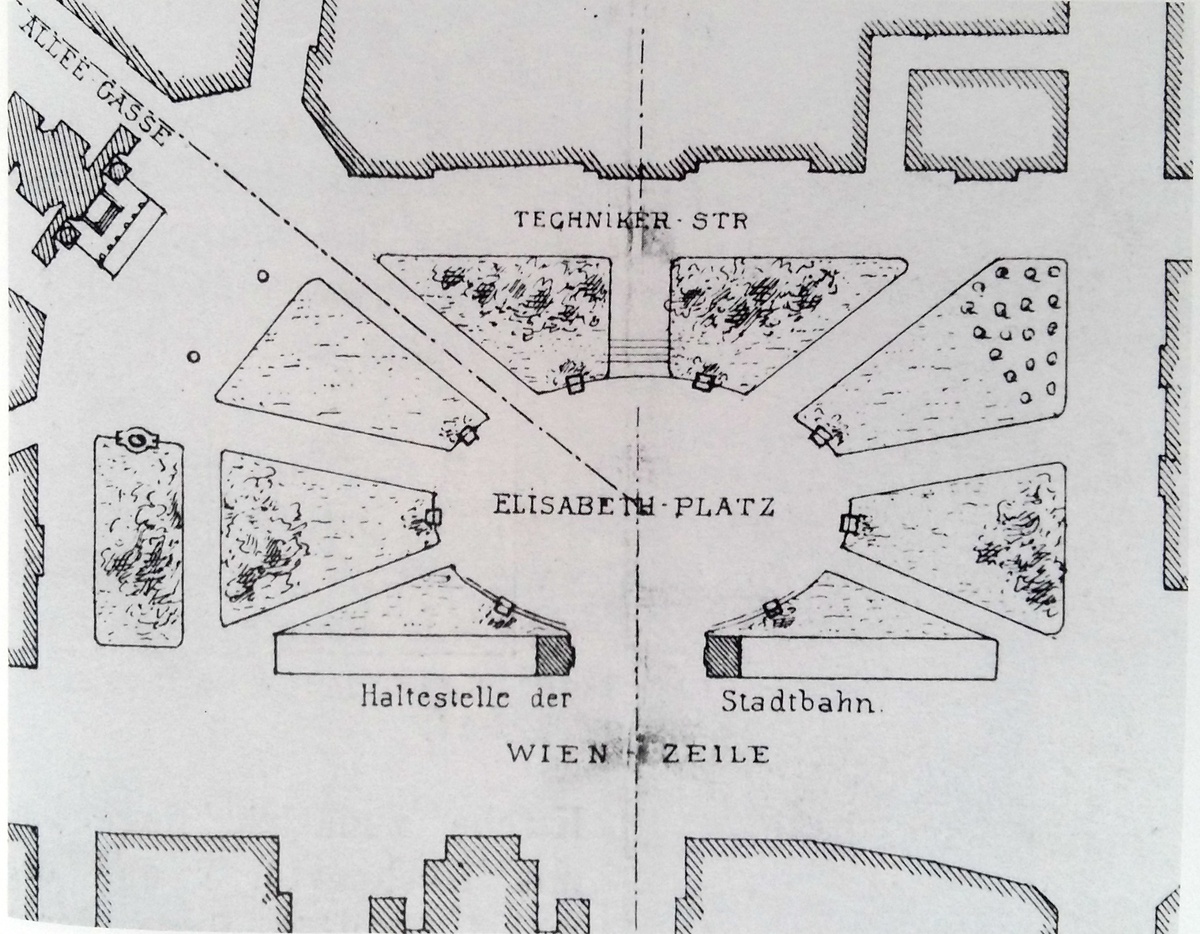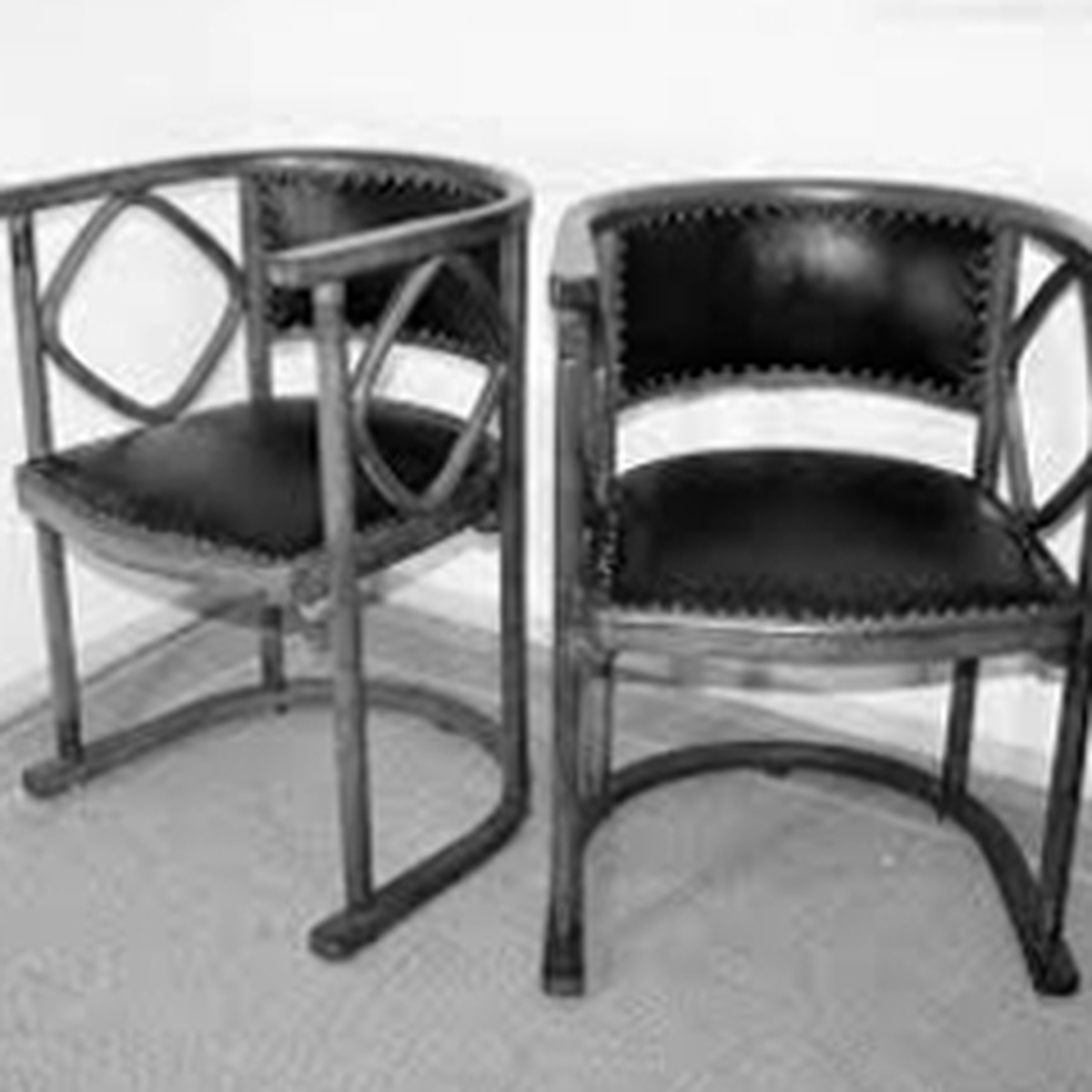Museo del Design del Friuli Venezia Giulia – Associazione di Promozione Sociale
P. IVA e CF 02863400301 – info@mudefri.it
THE "LANGUAGE" CONTEXT

Fabiani’s design identified itself often through the use of ellipsis and the oval in both the flat plans and the elevations of the architecture he designed: e.g. the shape of the pool located in the gardens of Casa Ferrari; the oval hall of Villa Karma; the elliptic stairs of Villa Artaria or the Trgosvki dom; the planimetries of Villa Urania.
The rocking chair summerizes part of his design philosophy: lack of decorations, knowledge of the materials and the technologies, overcoming of the conventions.
On the left the Urania Palace in Wien (1909/1910).
Below, the drawing for a competition launched in 1898 for the arrangement of the Karlsplatz in Wien. (from
"Max Fabiani, New Borders of Architecture", M. Pozzetto,
Cataloghi Marsilio, 1988, p. 121)
"One does not remove what is superficial to weaken an object: one removes what is superficial to mark the lines, to emphasize the structures, to strengthen the volume and to add solidity. In the end, one does so just to add meaning and awareness. "
(Max Fabiani, ACMA, THE SOUL OF THE WORLD)



Curved wood techniques translated projects of famous architects into easily replicable designs on large-scale production at lower costs. An example of this process was the Fledermaus, a small armchair inspired by an original design by Josef Hoffmann for the Purkersdorf Sanatorium in Vienna.
The Società Anonima Volpe only exploits the “design language” proximity and the professional relationship with a famous architect: Max Fabiani.
HOW TO DATE THE ROCKING CHAIR N. 267
The Società Anonima Antonio Volpe was founded in 1908.
In 1911, at the local exhibition in Udine, there is no reference to rocking chairs in its catalogues: therefore, it is possible to date their manufacture from 1911 to 1916, when due to the war, the Società had to slow down its production until total closure.
The tradition of dating models with progressive numbers and the picture of the chair n. 269 as the cover of the first postwar catalogue are two distinctive clues for a further assumption: indeed, it is likely that the chair n. 267 had been one of the latest products from the Società Antonio Volpe before the Great War.
A new restriction in dating the Egg rocking chair comes from the fact that the chair was probably produced until around August 1914, when Volpe reported to his customers the difficulty of delivering orders for the lack of timber from Austria, which was already at war.
The model with backrest and reclining seat came back in the 1922 catalogue, reinforced by an additional joint between the slides, which is completely missing in the base models.